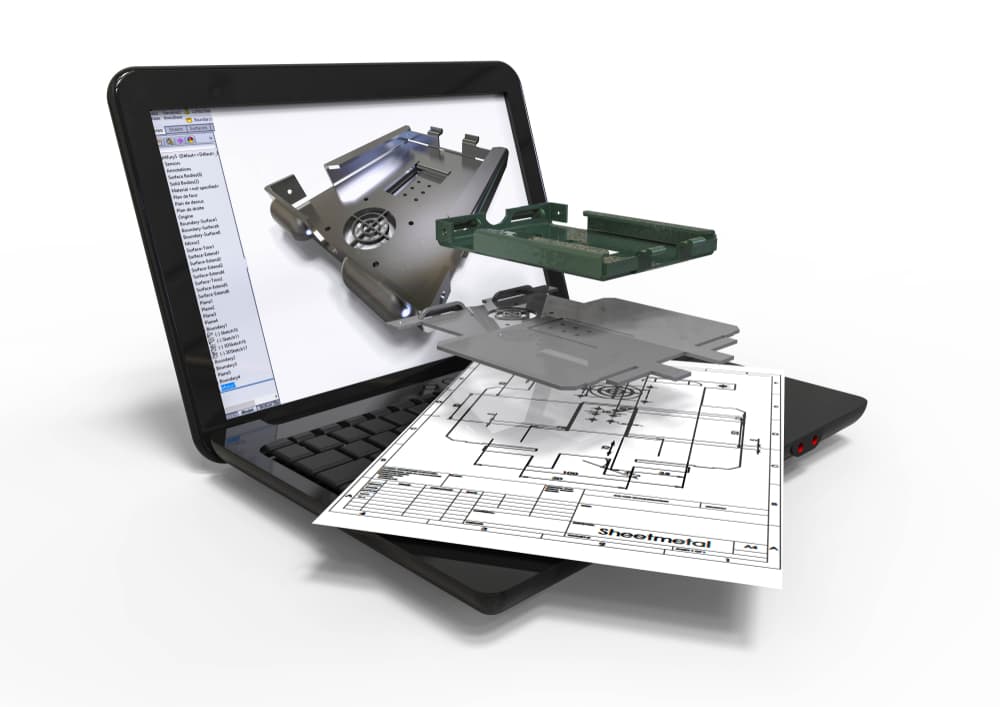
CAD design relies on not only the skill of the designer, but also the clarity of the design itself. Since designs are later translated into physical PCB components, it’s crucial for designs to be written in a way that ECAD and MCAD designers can understand. CAD STEP (Standard for the Exchange of Product) files guide engineers in designing adaptable and easily transferable component documents for ECAD/MCAD integration. While other design prototype file formats exist, STEP files are the de facto standard for PCB design.
What Are CAD STEP Files?
STEP files are an international file format for CAD data modeling and exchange. The formal name of this standard is ISO 10303-21, and it has existed since the 1980s. Noptable pros and cons of this most used CAD format are listed below.
|
CAD STEP FILE ATTRIBUTES |
|
|
PROS |
CONS |
|
Standardized format |
Ambiguity among different versions |
|
Easily adaptable |
Do not contain data for direct GPU rendering |
|
ECAD and MCAD tool agnostic |
Require more storage space than some other 3D CAD file formats |
There have been some changes to the format over the years, but its focus has always been on a highly structured, human-readable format. The predictable structure of a STEP file makes it easy to parse in software. A STEP file version based on XML also exists, but the plain text version is more common among designers and software implementations. The format is especially useful because it includes model data, and contains information which assists in database indexing and application display.
The STEP file standard integrates the EXPRESS data modeling language, which is another international standard. This data modeling language has a restricted character set and was inspired by programming languages. This means the data section is not quite as human-readable as the rest of a STEP file, but it still explains PCB design in an unambiguous way. Software reading and writing STEP files must integrate EXPRESS.
Many software products handling STEP files can convert between STEP files and other STEP models. Since many reputable products take various file formats as input and produce other formats as output, converting between formats is common in PCB design. All major CAD applications can handle STEP file imports, although they may expect different file extensions.
Using STEP Files for CAD Design
STEPCode is an open-source project of particular interest. Designers have relied on STEPCode for reliable STEP models for nearly three decades. Inspired by the NIST STEP Class library, which was developed in the mid-1990s, it has a wide variety of uses in CAD design. The project is a collection of open-source libraries, tools, and resources strictly complying with the STEP standard that integrates standards-compliant models with plugins for multiple programming languages, has the ability to convert between formats, and provides fairly good documentation.
It also contains easily accessible links to related standards; such as data formats used for ECAD/MCAD in the oil and gas industries, a specialized STEP file standard used in the aerospace industry, and a production standard for developing automotive ECAD and MCAD systems. Any standard reusing part of the STEP standard can be read, manipulated, and verified with STEPCode. Parts of STEPCode are also used in other open-source projects, such as BRL-CAD and SCView.

Translating a CAD design into a functional part.
Why STEP Files Are the Best Choice for CAD Design
STEP files are the de facto standard for information transfer in CAD design, and all major ECAD/MCAD applications have the ability to use them. Some legacy formats—like IGES—are still in use, but the broad adoption of STEP has made those file types progressively less useful. The STEP standard has been updated multiple times, the most recent being in 2017, while some of the older standards are decades old and haven’t been updated to reflect modern design needs. While STEP and its data modeling language, EXPRESS, are not updated simultaneously, they are updated regularly and have detailed documentation for easy adoption.
The STEP format is also extremely flexible, proving suitable for expansions in the electronics industry, and in the wide application of electronics. STEP models have been useful since before the dot com boom, throughout the ubiquitous adoption of smartphones, and are vital to the proliferation of smart devices. The STEP model’s persistent relevance has been possible because newer versions allow for direct integration with programming languages like JavaScript, and the organization of multiple STEP files for complex models.
Ensuring Accurate STEP Files for Your Design
Like PCB footprints, it is possible to find published STEP files of lesser quality, and designers should be wary of these. Low quality STEP files may have missing or incorrect information. A clear indicator of a low-quality file is one not conforming to the established CAD STEP file standards. Keep in mind, a file conforming to the STEP standard may still be missing information.
Since CAD designs vary widely, a designer’s next best defense against bad STEP files is to obtain those files from reputable sources. Designers can find models in datasheets, community forums, or search engines, among other sources. Highly curated groups of models are ideal because they are verified by professionals, and often comply with more than one data modeling or electronics standard.
The trend towards more efficient ECAD/MCAD integration is driven by the availability and usefulness of CAD file formats that enhance the workflow between electrical/electronic engineers, mechanical engineers, and other electromechanical product team members. However, as for all electronic components, component CAD file format accuracy is paramount to realize the advantages of this integration. Therefore, it is important to rely on an industry leader for your CAD models and component information.
If you’re looking for CAD models for common components or important design information on CAD STEP files, Ultra Librarian helps by compiling all your sourcing and CAD information in one place.
Working with Ultra Librarian sets up your team for success to ensure streamlined and error-free design, production, and sourcing. Register today for free.








